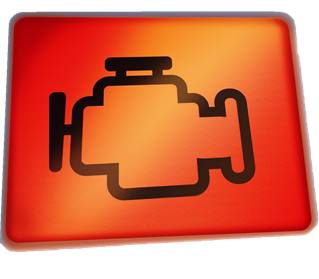Catalytic Converter

CAT Installation & Technical GuideThis guide provides valuable installation and technical advice when inspecting and replacing catalytic converters. The guide is split into 5 sections as follows: 1. Warning 2. Reasons for Failure 3. Removing the old Converter 4. Installation Instructions 5. ‘Running in’ the Catalytic Converter
1. Warning Catalytic converters are a “fitted for life product”. If it has failed there will be a reason for the failure. Unless the cause of the original failure has been addressed and rectified the new unit will also fail. Klarius strongly recommend that a new oxygen sensor be fitted when a catalytic converter is replaced for any reason.
2. Reasons for failure
a. Emission related. (i) Failure of an emission control device (lambda sensor). (ii) Failure of an engine management system component (ECU, Injectors, EMS sensor etc). (iii) Basic maintenance (plugs, filters leads) requiring attention. (iv) Any engine that is operating “out of tune” can potentially damage a catalytic converter.
b. Corrosion Failure of connecting pipes due to corrosion.
c. Physical damage The converter has failed as a result of: (i) Impact either when fitted or road debris. (ii) Driving through a flood or ford (thermal quenching) when the converter is at operating temperature.
d. Exhaust hanger failure The converter has failed due to physical stress caused by a hanger/mounting failure.
e. Contamination A fuel, oil or water additive has been allowed to enter the exhaust/catalyst (head gasket?)
f. Engine wear An engine that is operating inefficiently due to general wear and tear (low compressions, burning oil etc.) could potentially result in converter failure. Whatever the fault, once you are confident that the reason for failure has been diagnosed it should be rectified before the converter is renewed. Failure to do this will result in premature failure of the new converter. The warranty issued by Klarius will not cover damage caused by any of the above.
3. Removing the old converter Warning: A catalytic converter operates at a higher than normal exhaust temperature and retains its heat for longer. Before removing the old part ensure that it has fully cooled down. Remove the lambda sensor if it is located in the converter assembly. Caution: lambda sensors have a tendency to seize and are easy damaged. Disconnect wiring before attempting to unscrew. Remove old converter carefully as they are often heavier than they look.
4. Installation Instructions When fitting the converter follow the normal exhaust fitting procedure, but heed the following warnings:
For the above reasons we strongly recommend that a catalytic converter fitting kit is used when a converter is fitted or re-fitted.
5. Running in the Catalytic Converter
1. Start the engine and check that all the seals/joints are gas tight at a low engine rpm (tickover) 2. Increase engine speed to approximately 2,000rpm and maintain this engine speed for a minimum of 20 minutes. This will ensure that the converter is correctly initialised. 3. Check the vehicle emissions are within the manufacturers recommended limits. 4. Road test the car for a minimum of 4 miles to ensure that all the seals are gas tight and the exhaust system is clear of the vehicles chassis/body work. 5. It is important that the correct running procedure is followed avoiding short journeys for at least the first 500 miles.
The majority of premature converter failures can be attributed to failures caused by not following the above advice. Failures of this type are not covered by the Klarius warranty. |
Related Articles |
 Firstly, ascertain the cause of failure of the original catalytic converter. There are many reasons why a catalytic converter can fail. The most common causes (but not limited to) are:
Firstly, ascertain the cause of failure of the original catalytic converter. There are many reasons why a catalytic converter can fail. The most common causes (but not limited to) are:


